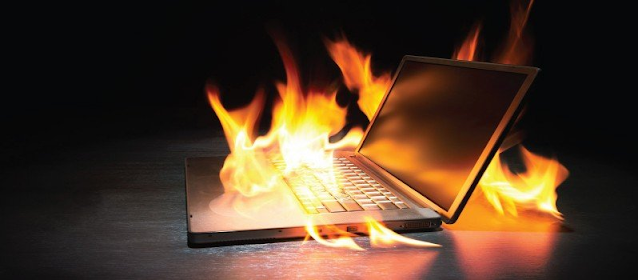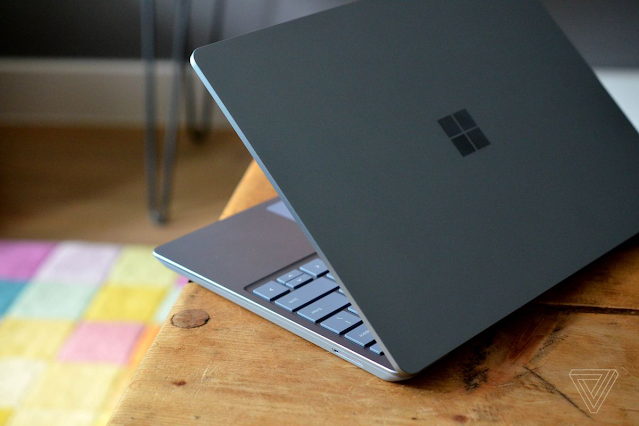Your hot Laptop isn't operating at peak efficiency
If your laptop overheats, you're probably familiar with the symptoms: fans that spin faster than a jet engine, a computer that's too hot to use on your lap, and the general feeling that your machine is battling for its life. Constant overheating is no way to live with a laptop; in fact, you can assist cool it down using a variety of approaches.
Why do laptops overheat (and why is this a problem)?
Overheating laptops are more than just a nuisance. When your laptop becomes too hot, it might really prevent it from performing as effectively as it should. This is because the CPU (the chip that controls your computer's graphics) and the GPU (the chip that works as the "brain" of your computer) are not permitted to become too hot. If these processors were permitted to become as hot as they might, the chips would be irreversibly damaged or destroyed.
When the components reach a specific temperature, often above 90 degrees Celsius, the system begins to reduce peak speeds and performance in an attempt to cool things down. That's fantastic for keeping those computer bits from frying, but it's not so great for your ability to get things done.
You might not notice the throttling if you're only sending emails and performing light surfing. However, if you rely on your computer's speed to complete tasks, these slowdowns might be excruciating.
What you can do to keep your laptop cool
There are several ways to keep your laptop cooler; while not all techniques will work for all computers, these procedures can assist lower the temperature of your computer while also improving overall performance.
Examine the fans
Fans are one method that many laptops keep their components cool. When the fans kick into high gear, your computer may become especially nosy. The objective is to pull cool air from the room and push hot air away from the machine. However, dust accumulates on the fans over time, reducing their capacity to circulate air in and out of the laptop. Because the fans are working overtime and the components aren't cooling, your machine throttles to lessen the heat.
The first step should be to use a can of compressed air to clear up the vents on your laptop. If the dust and particles aren't too bad, this noninvasive approach might help your laptop restart cooling itself.
If things are still excessively hot, and your laptop is easy to open, you may access the fans. From here, carefully brush away dust and debris using a brush, pressurized air, or a vacuum. If you don't know how to open your laptop correctly, there's probably a guide online for your exact model.
Of course, not every laptop has a fan. If you have a MacBook Air, Chromebook, or any small and light laptop that lacks fan-cooling, you should check into other options here.
Take care of your surface
For maximum performance, your laptop need a flat, cold surface. If it has fans, that helps with ventilation, but heat will dissipate more quickly when the laptop is in contact with such a surface.
Soft, uneven surfaces, such as sheets, cushions, or carpet, on the other hand, are not conducive to heat control. Soft fabrics can clog vents, impairing the effectiveness of fans to circulate air through your machine. These materials are also weak at dispersing heat, thus heat will accumulate in your laptop.
In general, keep your laptop on a firm surface such as a table, counter, or desk. To aid with ventilation, you might either suspend your laptop on a stand or use a laptop cooling pad.
Thermal paste and insulation pads
Thermal paste helps heat from your CPU and GPU to be transferred more efficiently to the heat sink, keeping things cooler. Thermal pads, on the other hand, assist transport heat away from the heat sink, therefore the two thermal tools complement each other effectively. Let's start with thermal paste: While all laptops come with it out of the box, the paste degrades with time. Not only that, but occasionally the paste used during production isn't optimal or isn't applied properly, so you're already at a disadvantage.
However, reapplying thermal paste is a difficult operation, especially if you are unfamiliar with opening laptops and messing inside. When you open your laptop and have access to the CPU and GPU, you must remove the previous coating of thermal paste and apply a new coat.
Thermal paste may be used on almost every device that has a CPU and GPU. However, the more difficult it is to access these gadgets, the more difficult the procedure. Some laptops are made to be simple to use, whereas others, such as MacBooks, are infamously difficult to open. To make matters worse, most MacBooks have their CPU and GPUs facing away from the backplate, which means you have to disassemble the entire laptop before flipping the board around to access to the CPUs.
Thermal pads, on the other hand, are frequently considerably easier to apply. Linus Tech Tips increased the fanless M1 MacBook Air's performance by simply adding thermal pads to the device's heat sink. While this significantly raised the temperatures of the MacBook Air's base, it actually outperformed the M1 MacBook Pro with its fan-cooling system during a stress test.
If you want to install thermal pads, apply thermal paste, or both, your best chance is to hunt out a guide for your specific laptop, just as you would for any repair.
Less is more
It's normal for us to push our computers, especially when we're doing numerous activities at the same time. The solutions listed above should naturally increase your device's speed, so you may be able to run more apps anyhow. Even with these cooling measures, your laptop may be unable to handle the number of apps you have running at any given time.
If you have too many Chrome tabs open, consider keeping only the ones you truly need open. If you don't need to have your Sims game running in the background while you're working, shut it until you're ready to play again. If you wish to edit video but are experiencing slowdowns due to overheating, consider dismissing all programs except those required for the editing job.
Being conscious of how you use your laptop may go a long way toward keeping things cool, especially if you keep it for an extended period of time.
#SarcasticGamer #SarcasticReview
SOURCE: lifehacker
What do you think of this blog? Write down at the COMMENT section below.







No comments:
Post a Comment